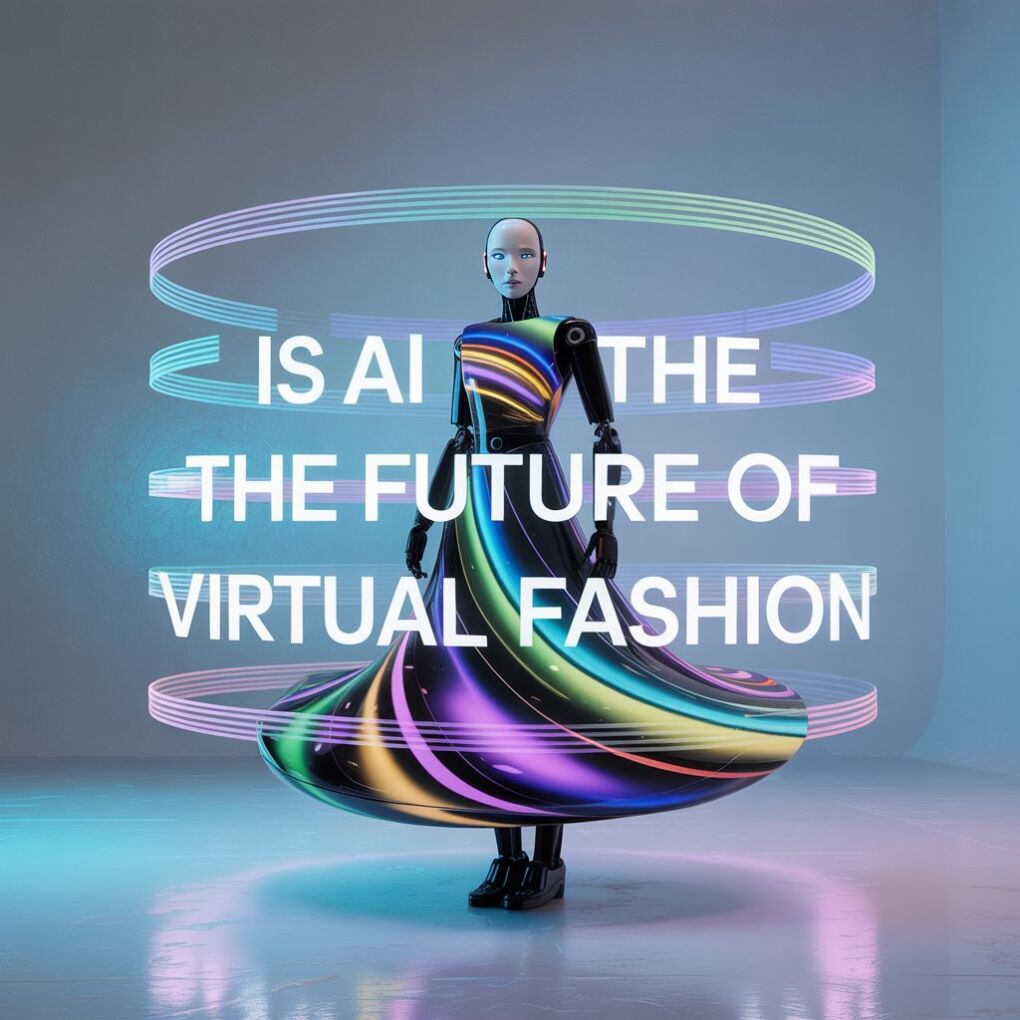The fashion industry is experiencing a digital revolution, and one of the key technologies driving this change is artificial intelligence (AI). AI has paved the way for new, innovative applications in fashion, such as digital clothing transformations and personalized shopping experiences. As AI continues to evolve, its impact on virtual fashion is becoming increasingly evident. But is AI the future of virtual fashion? In this article, we will explore how AI is shaping the future of the fashion industry and its role in creating a more immersive and dynamic fashion experience.

What is AI in Virtual Fashion and How Does It Work?
AI in virtual fashion refers to the use of machine learning algorithms and computer vision to create digital representations of clothing, allow virtual try-ons, and even design fashion garments. By analyzing large datasets of clothing and human body images, AI can alter and manipulate images in real-time to create realistic, digitally rendered clothing.
AI technology in fashion is not just limited to image manipulation. It enables businesses to offer virtual fitting rooms, where customers can try on clothes digitally. This technology is revolutionizing the way consumers engage with fashion online, providing a more immersive and personalized shopping experience.
The Role of AI in Virtual Fashion
AI has already had a significant impact on virtual fashion, and its influence is only expected to grow. AI-driven technologies are allowing brands to design, manufacture, and sell virtual clothing without the need for physical fabrics. This eliminates the need for traditional design processes and enables designers to create entire collections virtually.
Through the use of virtual clothing and digital models, consumers can now try on clothes without ever stepping foot in a store. This offers a more convenient and accessible shopping experience, especially for online shoppers who often struggle with sizing issues or the inability to try on garments. Virtual fashion powered by AI is also enhancing the customization and personalization of clothing, allowing users to virtually mix and match garments based on their preferences.
The Ethical Considerations of AI in Fashion
While AI offers a range of exciting possibilities for the fashion industry, it also raises important ethical concerns. The ability to digitally alter and manipulate images of clothing and bodies brings up questions about privacy, consent, and the potential for misuse.
One major concern is the use of Undress AI to modify images without the consent of individuals, especially celebrities or influencers. This can lead to privacy violations and potential damage to reputations. Additionally, the use of AI in fashion raises concerns about the promotion of unrealistic beauty standards and body image issues. With digital models and avatars becoming increasingly common, there is a risk of perpetuating unattainable beauty ideals.
It is essential for the industry to approach the use of AI with responsibility and transparency. AI-powered tools should be used to promote diversity and inclusion while respecting the privacy and consent of all involved.
Benefits of AI in Fashion
AI offers numerous advantages to both consumers and businesses in the fashion industry. Here are some of the key benefits:
- For Designers: AI tools allow fashion designers to experiment with digital clothing designs and create prototypes without the need for physical garments. This not only saves time and resources but also allows for greater creativity and flexibility.
- For Consumers: AI enables virtual fitting rooms, allowing consumers to try on clothes digitally before making a purchase. This eliminates the uncertainty of buying clothes online and reduces the likelihood of returns.
- For Retailers: By integrating AI into their platforms, retailers can offer personalized shopping experiences, recommending items based on users’ preferences and past purchases. Virtual try-ons also provide customers with a more engaging and immersive shopping experience.
The ability to digitally interact with clothing enhances how consumers engage with fashion and allows them to visualize products in a more interactive and personalized way.
AI and the Future of Virtual Fashion in E-Commerce
The e-commerce industry is one of the biggest beneficiaries of AI-driven virtual fashion. The integration of virtual fitting rooms, where consumers can see how clothes fit their avatars, is revolutionizing the way people shop online. This technology not only makes shopping more convenient but also helps reduce the environmental impact of returns, which have been a significant challenge in the online shopping industry.
As AI continues to evolve, we can expect even more interactive and realistic shopping experiences. Virtual fashion powered by AI will allow users to interact with clothing in ways that were previously impossible, making online shopping feel more like an in-store experience. The rise of virtual influencers and avatars in fashion will further enhance this trend, creating new opportunities for digital brands and virtual fashion designers.
Challenges of Implementing AI in Fashion
While the potential of AI in fashion is exciting, there are several challenges that need to be addressed:
- Technical Limitations: AI-powered virtual fashion is still in its early stages, and achieving high levels of realism and accuracy remains a challenge. The technology must continue to evolve to produce clothing and models that look natural and behave like real fabrics.
- Regulatory and Legal Barriers: The use of AI in fashion raises legal questions, particularly around intellectual property, privacy, and data protection. As the technology becomes more widespread, it will be important to establish clear regulations to ensure ethical and legal usage.
- Consumer Acceptance: While digital fashion is growing in popularity, some consumers are still hesitant to embrace AI-driven shopping experiences. Overcoming this barrier will require brands to demonstrate the value and convenience of virtual fashion in ways that resonate with their target audience.
The Future of AI in Fashion: Opportunities and Innovations
Looking to the future, the potential of AI in virtual fashion is boundless. As AI technologies advance, we can expect even more realistic digital clothing and enhanced virtual shopping experiences. Integration with augmented reality (AR) and virtual reality (VR) will allow consumers to experience clothing in entirely new ways, including trying on garments in real-time using their smartphones or AR glasses.
Additionally, the use of AI to predict fashion trends and generate custom designs will change how fashion collections are developed. Consumers will also have the opportunity to create fully customized clothing tailored to their personal preferences, without ever needing to visit a physical store.
AI will continue to push the boundaries of virtual fashion, providing new opportunities for designers, retailers, and consumers to interact with fashion in exciting and innovative ways.
How to Get Started with AI in Virtual Fashion
If you’re interested in exploring AI-driven virtual fashion, there are numerous tools and platforms available to help you get started. Retailers can integrate AI-powered virtual try-ons and personalized shopping experiences into their websites, while designers can experiment with digital fashion design tools to create their collections.
One of the platforms to explore is Undress AI, which offers AI-powered fashion tools that allow businesses to create virtual clothing experiences for their customers. These technologies are poised to redefine the fashion landscape and provide more dynamic and personalized experiences for users.
Conclusion: Is AI the Future of Virtual Fashion?
In conclusion, AI is undoubtedly shaping the future of virtual fashion, offering exciting possibilities for both consumers and businesses. From virtual clothing try-ons to the creation of digital garments, AI is transforming how we experience fashion online. While ethical considerations and technical challenges remain, the potential for AI to revolutionize the fashion industry is immense. As the technology continues to evolve, we can expect even more immersive and interactive virtual fashion experiences that will reshape the way we shop, design, and engage with clothing.
To learn more about the future of fashion technology, visit XME bio, a platform dedicated to exploring cutting-edge AI solutions across various industries.
